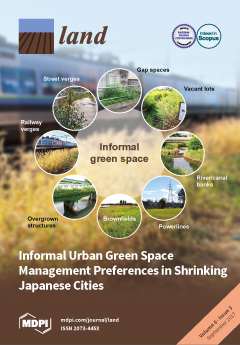Resource information
Urban residents’ health depends on green infrastructure to cope with climate change. Shrinking cities could utilize vacant land to provide more green space, but declining tax revenues preclude new park development—a situation pronounced in Japan, where some cities are projected to shrink by over ten percent, but lack green space. Could informal urban green spaces (IGS; vacant lots, street verges, brownfields etc.) supplement parks in shrinking cities? This study analyzes residents’ perception, use, and management preferences (management goals, approaches to participatory management, willingness to participate) for IGS using a large, representative online survey (n = 1000) across four major shrinking Japanese cities: Sapporo, Nagano, Kyoto and Kitakyushu. Results show that residents saw IGS as a common element of the urban landscape and their daily lives, but their evaluation was mixed. Recreation and urban agriculture were preferred to redevelopment and non-management. For participative management, residents saw a need for the city administration to mediate usage and liability, and expected an improved appearance, but emphasized the need for financial and non-financial support. A small but significant minority (~10%) were willing to participate in management activities. On this basis, eight principles for participatory informal green space planning are proposed.


